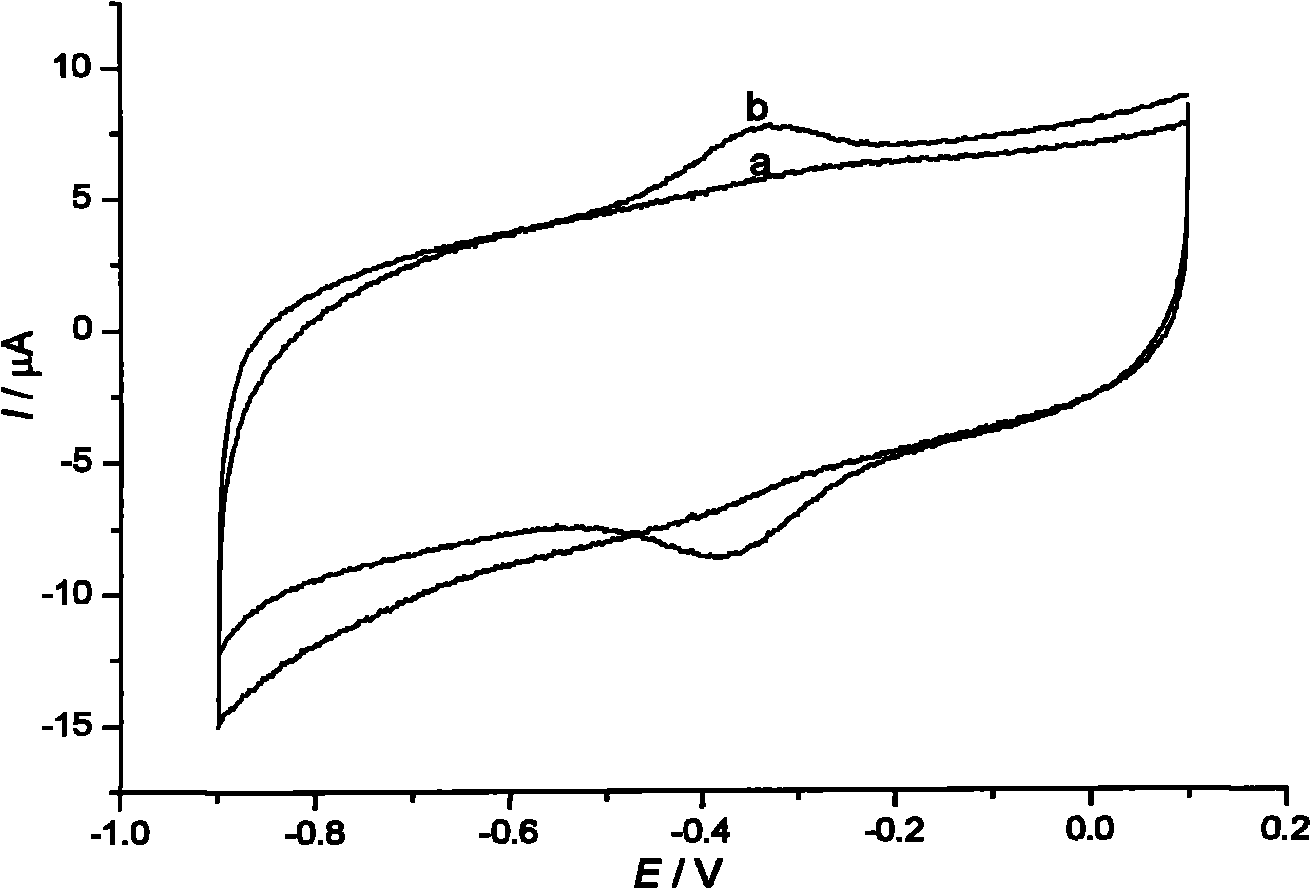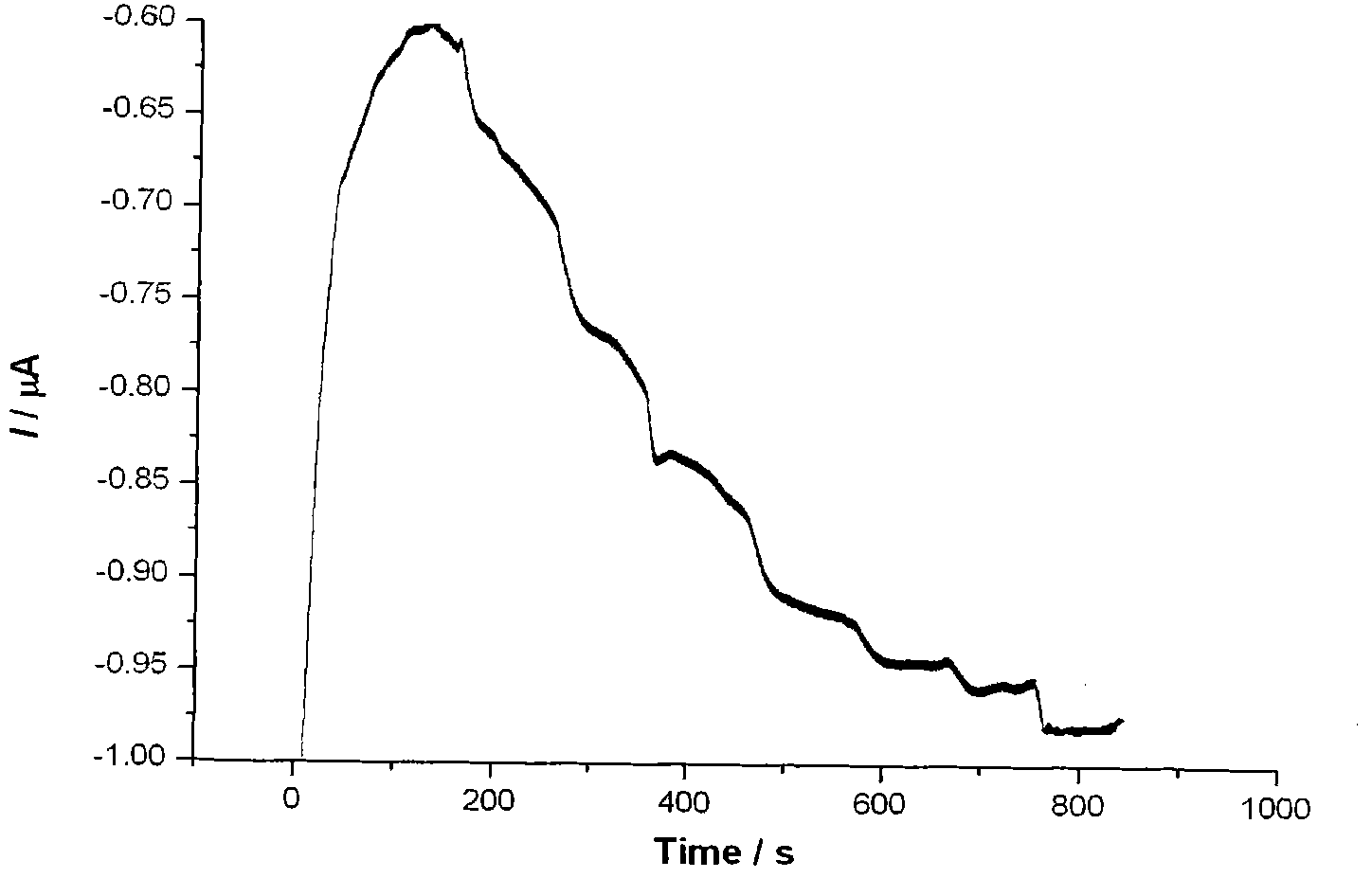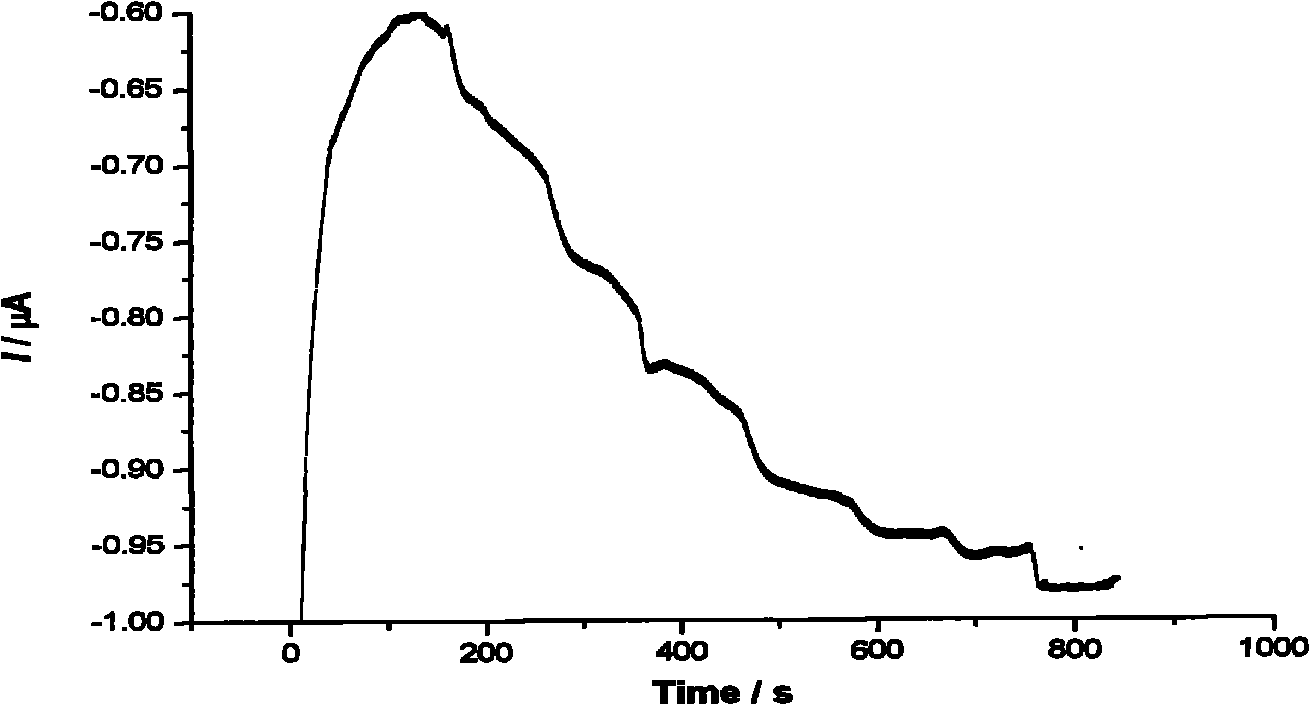Ampere-type biosensor for detecting benzopyrene as well as preparation method and application thereof
A biosensor, benzopyrene technology, applied in the direction of material electrochemical variables, etc., can solve problems such as difficulties in electron transfer, and achieve the effects of easier control of operating parameters, good reproducibility and stability, and simple operation
- Summary
- Abstract
- Description
- Claims
- Application Information
AI Technical Summary
Problems solved by technology
Method used
Image
Examples
Embodiment 1
[0016] Example 1: Preparation of an amperometric biosensor for detecting benzopyrene: add 10 mg of nano-montmorillonite to 1 mL of distilled water and continue to stir for 12 hours. After standing for 5 hours, centrifuge in a centrifuge at 3500 rpm for 30 minutes and take the supernatant to obtain a nano Montmorillonite suspension, 0.5 mg of dihexadecyl phosphoric acid was added to 0.5 ml of nano-montmorillonite suspension, and ultrasonically dispersed in a 700w ultrasonic instrument for 16 hours to obtain a dispersion of nano-montmorillonite and dihexadecyl phosphoric acid ; The cytochrome p4501A1 of 1mg is directly dissolved in the phosphate buffer solution of 1mL pH7.0 to obtain the cytochrome p4501A1 liquid; Crack the graphite electrode and dry it at room temperature to obtain an amperometric biosensor for detecting benzopyrene.
[0017] Put the resulting cytochrome p4501A1 / nano-montmorillonite-dicetyl phosphate-modified pyrolytic graphite electrode in a pH7.0 phosphate bu...
Embodiment 2
[0019] Example 2: Preparation of an amperometric biosensor for detecting benzopyrene: Add 10 mg of nano-montmorillonite to 1 mL of distilled water and continue to stir for 12 hours. After standing for 3 hours, centrifuge in a centrifuge at 3500 rpm for 30 minutes and take the supernatant to obtain nano Montmorillonite suspension, 2 mg of dihexadecyl phosphoric acid was added to 1 ml of nano-montmorillonite suspension, and ultrasonically dispersed in a 700W ultrasonic instrument for 12 hours to obtain a dispersion of nano-montmorillonite and dihexadecyl phosphoric acid ; Dissolve 1 mg of cytochrome p4501A1 directly in 1 mL of Tris-HCl buffer solution of pH 7.0 to obtain cytochrome p4501A1 solution; mix the dispersion with equal volumes of cytochrome p4501A1 solution, take 5 microliters of the mixed solution and apply it on a glass carbon electrode, and dried at room temperature to obtain an amperometric biosensor for detecting benzopyrene.
Embodiment 3
[0020] Example 3: Preparation of amperometric biosensor for detecting benzopyrene: Add 15 mg of nano-montmorillonite to 1 mL of distilled water and continue to stir for 10 hours. After standing for 5 hours, centrifuge in a centrifuge at 5000 rpm for 20 minutes and take the supernatant to obtain nano Montmorillonite suspension, 1.0 mg of dihexadecyl phosphoric acid was added to 0.5 ml of nano-montmorillonite suspension, and ultrasonically dispersed in a 700W ultrasonic instrument for 15 hours to obtain a dispersion of nano-montmorillonite and dihexadecyl phosphoric acid ; Dissolve 1mg of cytochrome p4501A1 directly in 1mL of pH 5.0 phosphate buffer to obtain cytochrome p4501A1 solution; mix the dispersion with equal volumes of cytochrome p4501A1, take 5 microliters of the mixed solution and apply it on the ordinary spectrum graphite The electrode is dried at room temperature to obtain an amperometric biosensor for detecting benzopyrene.
PUM
 Login to View More
Login to View More Abstract
Description
Claims
Application Information
 Login to View More
Login to View More - R&D
- Intellectual Property
- Life Sciences
- Materials
- Tech Scout
- Unparalleled Data Quality
- Higher Quality Content
- 60% Fewer Hallucinations
Browse by: Latest US Patents, China's latest patents, Technical Efficacy Thesaurus, Application Domain, Technology Topic, Popular Technical Reports.
© 2025 PatSnap. All rights reserved.Legal|Privacy policy|Modern Slavery Act Transparency Statement|Sitemap|About US| Contact US: help@patsnap.com



